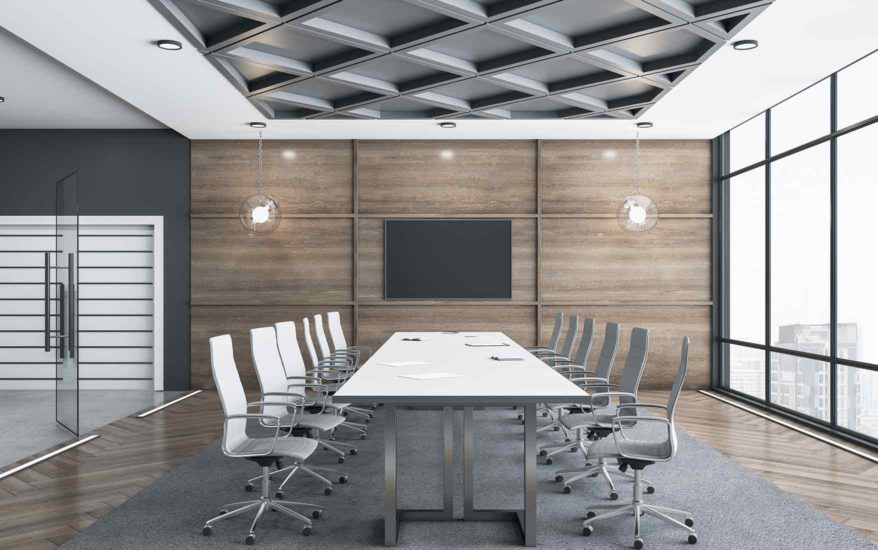
The global workforce may be a smorgasbord of different people, with different backgrounds, different opinions and different attitudes towards work, but one thing is for sure – the majority of us agree that most workplace meetings are a waste of time. But, are they a waste of money, too?
According to the experts, the frustrating and often pointless meeting culture that has taken a hold of so many of our workplaces could be costing us millions in excess expenditure, not to mention wasted time and employee morale.
A 2014 study found that executives now spend up to two days in meetings – that’s a shocking amount of time to dedicate to the humble meeting, but perhaps not that surprising. Add in video conferencing, phone calls and online chat, and realistically, many of us are attending far more types of meeting than the just classic boardroom variety. It’s a situation that’s out of control, and is costing more than we realise.
Using Harvard Business Review’s calculator, we can estimate the cost of the average meeting, and identify how much your meetings may be costing your business. But don’t forget to scrutinise the following criteria first, and how they could be ensuring your meetings remain at a high price, no matter your best intentions:
Meeting length
It’s simple maths: the longer the meeting, the more it’s going to cost you. Obviously the odd long meeting is inevitable, but realistically, meetings should aim for as short a time as possible, both to ensure employees are not kept away from their desks, and to allow meeting room space to stay free for others. How can you guarantee that meetings are kept short?
Research show the average length of workplace meetings has seen an increase by 10% in the past 15 years – How long should a meeting be?
The number one tool here is a strong agenda, which is sent to all meeting attendees beforehand, giving them time to review and question any points, or add any that are deemed important enough. Work out how much time each topic or sub topic will require to discuss, add each section up, and put a little extra time allowance for unknowns onto the overall figure. That should calculate the length of your meeting, without wasting too much time.
Meeting space
Different meeting spaces are appropriate for different types of meetings; an informal chat that won’t contain sensitive information can easily be undertaken in a breakout or social space, rather than in a booked meeting room or board room. In fact, if you’re short on meeting space, your meetings could be costing your business even more, since meetings of lesser importance may be bumping imperative meetings out of your limited meeting rooms.
The obvious fix here is to invest in a better way of managing your meeting room bookings. A meeting room booking software that covers all bases will provide you with the ability to instantly extend or cancel a booking, so that no time is wasted searching for a room appropriate to your meeting. It’s also important to encourage employees to use different areas for different things – the concept of agile working can help introduce some flexibility to meeting spaces, and allows staff to decide which space works best for the responsibilities they have at hand.
Meeting equipment
Meeting room equipment and technology is a hugely overlooked factor in the average cost of a meeting. For example, if your video call technology is not up to date, and is therefore freezing all over the place, isn’t your meeting going to run longer, achieve less, and therefore cost you more? Analysing the equipment and tech you have available in each meeting room, and thoroughly testing it on a regular basis, is a very good idea. Avoiding having someone attempt to use a broken microphone or projector can save both valuable minutes and a fair amount of embarrassment.
You might like to read, What do you need from your meeting room?
Meeting behaviour
Finally, inappropriate behaviour in a meeting can cost you more than you think. From employees sending cheeky emails on their smart phones, which is reportedly on the rise, to certain employees dominating meetings, aggravating others or behaving in a dysfunctional manner, you may find that this type of disruption is costing far more than it may immediately appear.
While it’s clear this kind of problem will extend a meeting’s length, it may also have an adverse effect on other employees, and therein lies the biggest problem. Is dysfunctional meeting behaviour causing your reliable employees to look for a new job elsewhere? Or perhaps they’re so exhausted from pointless, rambling meetings that they’re not getting much done when they get back to their desks?
Talk to your workforce, gather opinions on meetings can be managed in a better way, and always follow up on reports of distracting or difficult behaviour in meetings.



